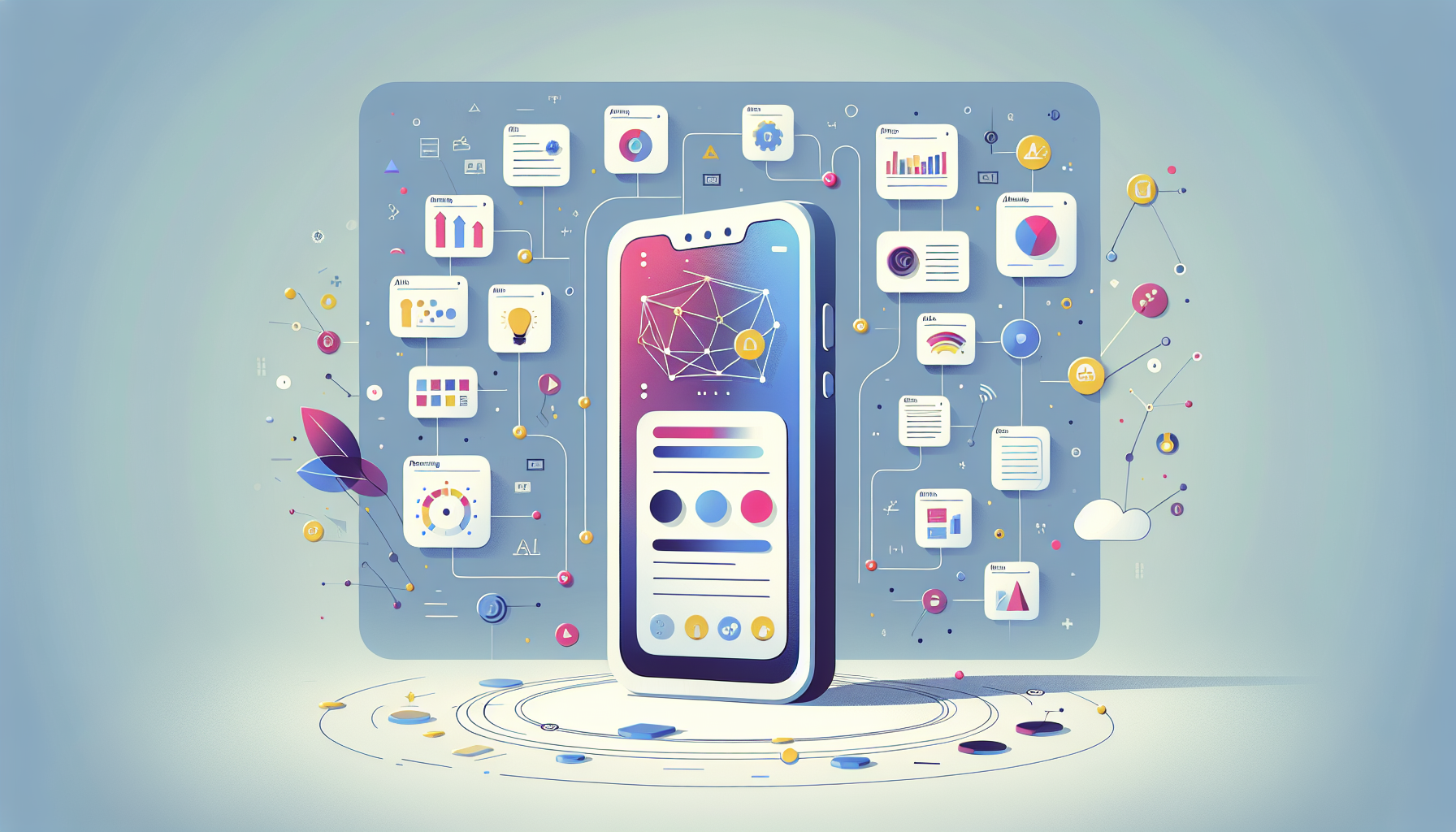Many of us find traditional learning methods a bit dull, especially when we’re juggling work or personal commitments. It’s totally understandable—who has the time to sit in a classroom all day? But here’s the exciting part: mobile apps can turn that tedious learning experience into something engaging and fun!
If you’re curious about how to harness the power of mobile apps for your eLearning journey, stick around! I promise you’ll uncover tips and tricks that can transform your approach, making learning more interactive and efficient.
From finding the right apps to essential features that enhance engagement, we’ll explore everything you need to know to integrate mobile technology into your learning strategy effectively. Let’s dive in!
Key Takeaways
- Mobile apps make learning flexible and accessible, allowing users to learn anytime and anywhere.
- Engagement is boosted through interactive content, gamified elements, and instant feedback.
- Personalization lets learners study at their own pace and according to their interests.
- Choose user-friendly apps that align with learning goals and offer secure access.
- Essential features include offline access, progress tracking, and responsive support.
- Regular feedback helps adjust learning strategies and keeps the content relevant.
- Overcome challenges like user disengagement and data privacy with support and transparency.

Using Mobile Apps to Improve eLearning Experiences
Mobile apps are changing the way we learn, making education more accessible and personalized. Students can take their lessons on the go, fitting learning into their busy lifestyles. From interactive quizzes to multimedia resources, apps cater to various learning styles.
They’re not just convenient; they often come with features that engage students better than traditional methods. For instance, gamification elements transform mundane tasks into exciting challenges, motivating learners to progress.
Benefits of Mobile Apps in eLearning
One major benefit of mobile apps is their flexibility. Learners can access materials anytime, anywhere, eliminating the constraints of classroom schedules. This is particularly useful for busy adults balancing work and study.
Apps can enhance engagement through interactive content and instant feedback. For example, platforms like Kahoot! allow teachers to create fun quizzes that increase participation and retention. It’s learning made enjoyable!
Another highlight is the personalization potential. With mobile apps, learners can tailor their experience based on their pace and interests. If a student struggles with a particular topic, an app can suggest additional resources or practice quizzes.
Moreover, mobile apps provide valuable analytics. Educators get insights into student performance, helping them address issues promptly. This data-driven approach can significantly boost learning outcomes.
Choosing the Right Mobile Apps for Learning
Selecting the right mobile apps can feel overwhelming given the plethora of options. Start by identifying the specific learning needs and goals. This way, you can focus on apps that align with those objectives.
Look for apps that offer a user-friendly interface. If learners find the app hard to navigate, they’re likely to abandon it. Try to choose apps that have positive reviews and come highly recommended from trusted sources.
Also, consider whether the app supports collaborative learning. Features like discussion boards or group projects can enhance the learning experience. For instance, apps like Slack can facilitate communication among classmates while working on group assignments.
Lastly, prioritize security and data privacy. With students accessing apps, it’s essential to ensure that personal information is kept safe. Check the app’s privacy policy and make sure they comply with regulations like COPPA for underage users.
Essential Features of Effective eLearning Apps
When it comes to effective eLearning, certain features can significantly enhance the user experience. First off, look for apps with offline access. This ensures learners can study without needing a constant internet connection, which is perfect for commutes.
Interactive elements are crucial, too. Quizzes, polls, and multimedia content should be integrated to keep learners engaged. For instance, apps like Quizlet allow users to create flashcards for quick study sessions, making learning fun.
Another critical feature is progress tracking. Learners should be able to see their achievements and areas needing improvement. Apps should provide visual indicators, like progress bars, to motivate users on their learning journey.
Finally, a strong support system within the app, including access to tutorials or FAQs, can be beneficial. It helps learners navigate challenges without frustration. Features like in-app messaging for quick assistance can also add a personal touch.

How to Integrate Mobile Apps into Your Learning Strategy
Integrating mobile apps into your learning strategy can be seamless and effective with the right approach. Start by identifying key learning objectives and selecting appropriate apps that align with these goals.
Next, provide a clear introduction to the selected app for your learners. This can include a tutorial or a quick demo, ensuring everyone understands how to navigate and utilize its features.
Encourage routine use by assigning tasks that require engagement with the app. For instance, you might ask students to complete weekly quizzes or participate in discussion forums through the platform.
Facilitate communication by checking in regularly with learners through in-app messaging. This not only provides motivation but also addresses any challenges they may encounter.
Lastly, gather feedback on the apps from your learners. This can help you understand what works, what doesn’t, and how you can enhance their experience. Regularly updating your app choices based on this feedback can maintain engagement and effectiveness.
Tips for Engaging Learners with Mobile Apps
Engaging learners with mobile apps involves a mix of creativity and strategic placement. Begin by leveraging gamification elements. Incorporate points, badges, or leaderboards to motivate learners.
Use multimedia content effectively. Videos, podcasts, and interactive slides can cater to different learning styles and keep interest levels high.
Set up virtual study groups or discussion boards within the app. This encourages collaboration and creates a supportive community among learners, allowing them to share insights and challenges.
Regularly update content to keep it fresh and relevant. Incorporate seasonal topics or current events to spark discussions and make learning feel timely.
Lastly, make use of push notifications wisely. Send reminders for tasks, quizzes, or upcoming events, but avoid overwhelming learners with too many notifications.
Challenges of Using Mobile Apps and How to Overcome Them
Despite their advantages, mobile apps do come with challenges that educators need to navigate. One common issue is the digital divide; not all learners may have access to the latest devices or reliable internet. Address this by providing offline resources or alternative ways to engage with content.
User engagement can also be tricky. If learners find the app difficult or unappealing, they may disengage. To counter this, conduct user testing to identify pain points and improve the app’s usability before implementation.
Another challenge is distraction. With many apps vying for attention, it’s easy for learners to lose focus. Encourage the use of productivity tools or features within the app that limit distractions during study time.
Data privacy concerns are valid, especially for younger users. Be transparent about how data is used and stored, ensuring compliance with regulations like COPPA.
Lastly, inadequate technical support can hinder the experience. Providing clear channels for help, whether through in-app support or dedicated staff, can significantly improve the user experience.

Future Trends in Mobile Learning Apps
The landscape of mobile learning apps is constantly evolving, and staying ahead means being aware of emerging trends that can shape the future.
One trend to watch is the rise of augmented reality (AR) and virtual reality (VR) integration in learning apps.
These technologies can create immersive learning experiences, allowing learners to explore complex subjects in a more engaging way.
For example, apps that use AR can let students visualize historical events or scientific processes right in their environment.
Artificial intelligence (AI) is also making waves by providing personalized learning pathways based on a student’s performance and preferences.
This means that your learning experience could be uniquely tailored to you, adapting in real-time to meet your needs.
Another significant trend is the growing emphasis on microlearning.
This approach focuses on delivering content in bite-sized modules, making it easier to digest information in our busy lives.
Think of it like snackable learning – quick lessons that fit perfectly into your day.
Lastly, social learning is gaining traction, with apps that foster peer interaction, enabling learners to share experiences and insights.
If you’re not already leveraging these trends, now’s the time to explore how they can enhance your learning strategy.
FAQs
Mobile apps enhance accessibility, allowing learners to study anytime and anywhere. They also provide interactive features, engagement tools, and instant feedback, which can significantly improve retention and overall learning outcomes.
Consider factors such as user interface, compatibility with learning objectives, offline capabilities, and essential features like quizzes or gamification. User reviews and testing the app beforehand can also guide your choice effectively.
Effective eLearning apps should include interactive content, progress tracking, offline access, gamified elements, and user-friendly navigation. These features enhance learner engagement and help track their development efficiently.
Common challenges include technical issues, learner distraction, and varying device compatibility. Address these by ensuring apps are well-designed, providing clear guidelines, and conducting regular updates to maintain functionality.
